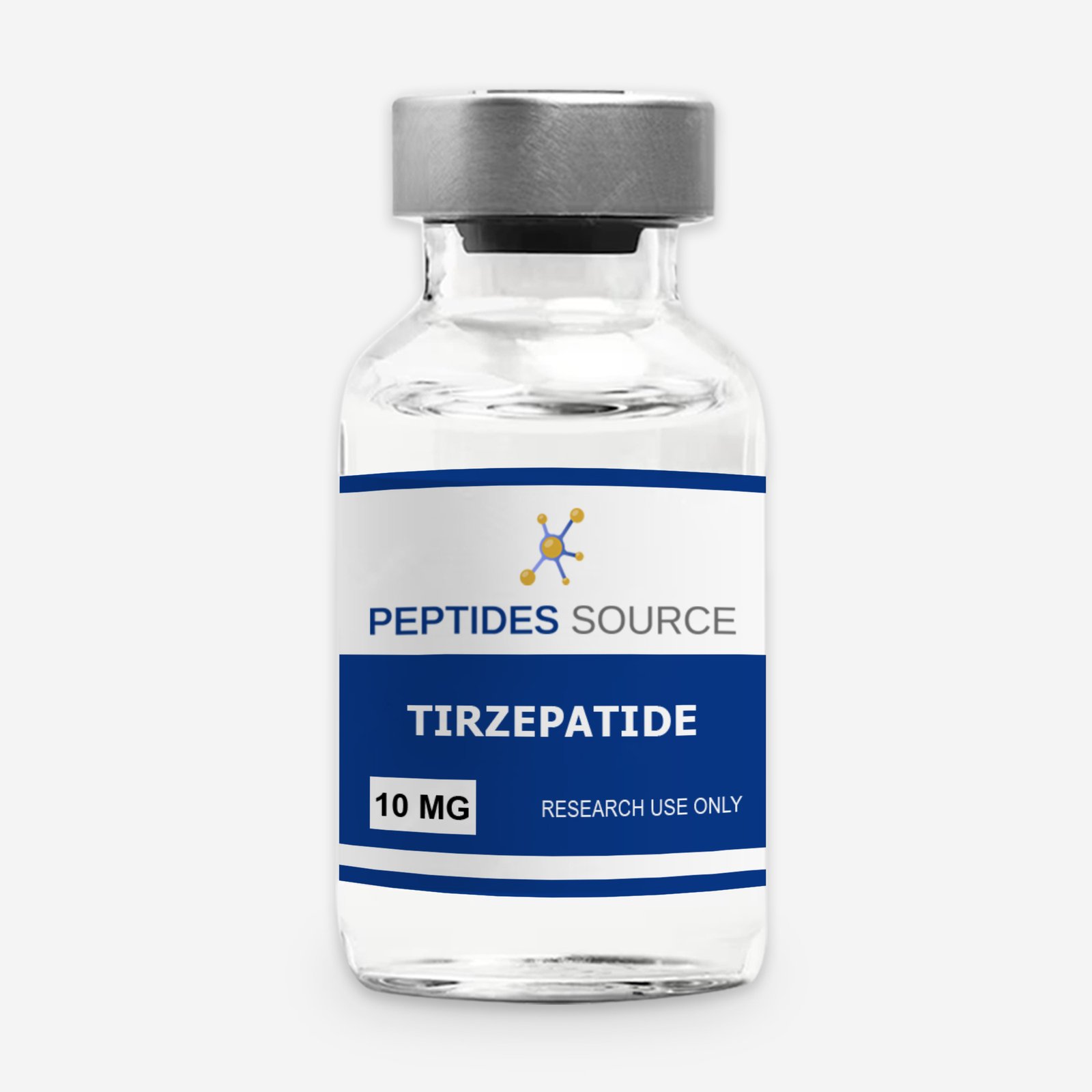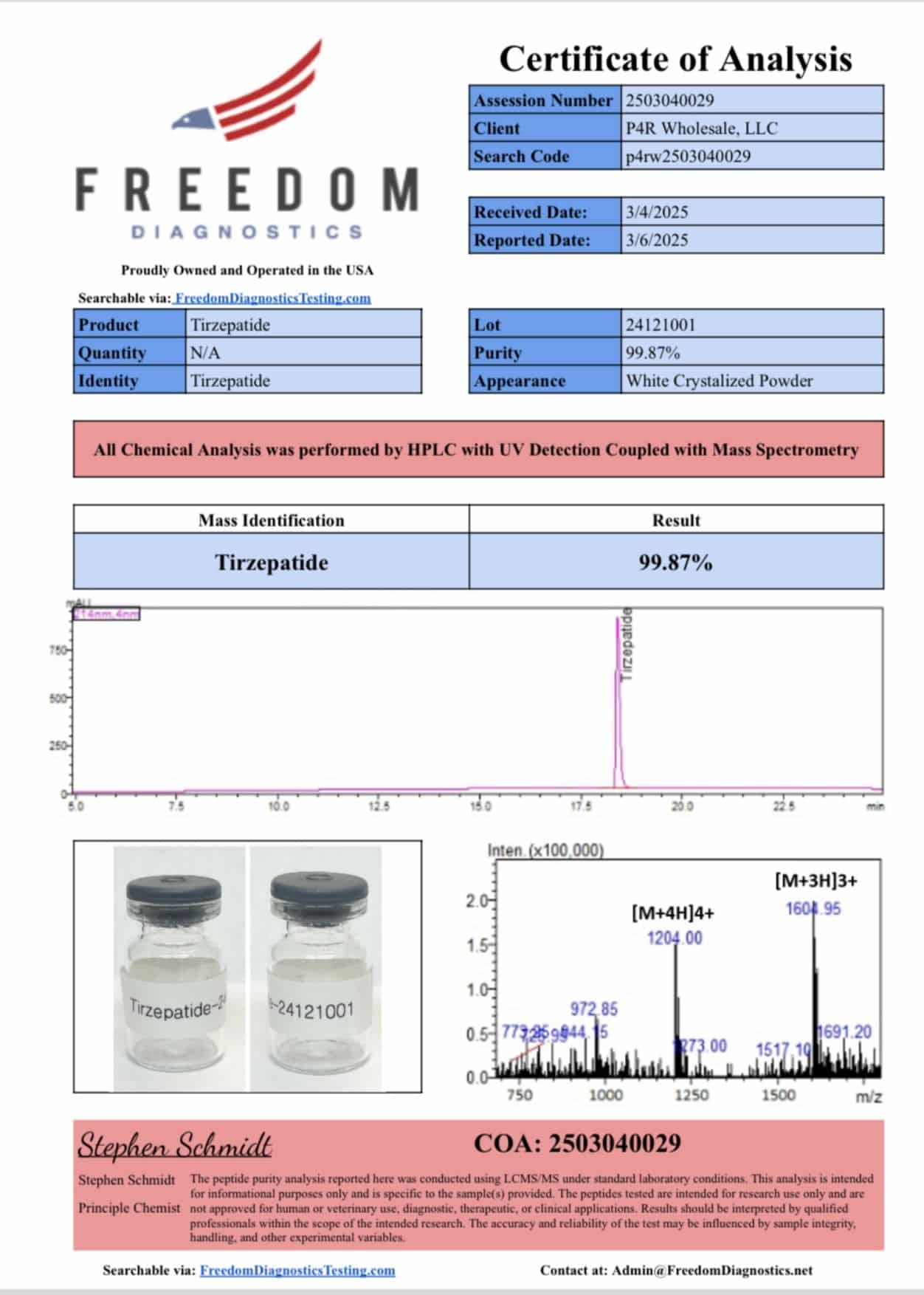Tirzepatide 10mg
$60.00 - $90.00
You save
- Physical profile: Lyophilized powder
- This product is sold as a research chemical and not for human or animal consumption. For laboratory use by qualified professionals.
Availability: Ships today if ordered and paid by 12 PM EST. (Except Saturdays & Sundays)
Product Usage
Tirzepatide 10mg IS INTENDED AS A RESEARCH CHEMICAL ONLY. This designation allows the use of research chemicals strictly for in vitro testing and laboratory experimentation only. All product information available on this website is for educational purposes only. Bodily introduction of any kind into humans or animals is strictly forbidden by law. This product should only be handled by licensed, qualified professionals. This product is not a drug, food, or cosmetic and may not be misbranded, misused or mislabled as a drug, food or cosmetic.
Tirzepatide: A Revolutionary Treatment for Type 2 Diabetes and Weight Loss
Tirzepatide is an innovative medication designed for diabetes and weight loss. It effectively treats type 2 diabetes while promoting significant weight reduction. This treatment works as a dual agonist, targeting the GLP-1 (glucagon-like peptide-1) and GIP (glucose-dependent insulinotropic polypeptide) receptors in the body. By stimulating these receptors, tirzepatide enhances insulin secretion when blood sugar levels rise, helping to lower glucose levels after meals.
Overview of Tirzepatide
Tirzepatide is an innovative medication that treats both type 2 diabetes and promotes weight loss. This treatment works as a dual agonist. It targets the GLP-1 (glucagon-like peptide-1) and GIP (glucose-dependent insulinotropic polypeptide) receptors in the body. By stimulating these receptors, tirzepatide enhances insulin secretion when blood sugar levels rise. This helps lower glucose levels after meals.Benefits of Tirzepatide
One significant advantage of tirzepatide for diabetes and weight loss is its ability to aid in weight management. Clinical studies show that patients using tirzepatide experience substantial weight loss. This is especially beneficial for individuals struggling with obesity, a common issue for many people with type 2 diabetes. Tirzepatide reduces appetite and increases feelings of fullness. This helps patients consume fewer calories and make healthier food choices.Administration and Convenience
Healthcare providers administer tirzepatide as a weekly injection. This option is convenient for patients. The less frequent dosing schedule is easier to manage than daily medications. This leads to better adherence to treatment plans. The ease of use appeals to those who often forget to take daily pills.Potential Side Effects
Patients should be aware of potential side effects associated with tirzepatide for diabetes and weight loss. These may include gastrointestinal issues like nausea, diarrhea, and vomiting. However, these side effects typically remain mild and often diminish over time. Patients must discuss their complete medical history and any other medications with their healthcare provider. This ensures tirzepatide suits their needs.Future Implications
Tirzepatide represents a new class of diabetes medications. It directly addresses two crucial aspects of diabetes management: blood sugar control and weight loss. As research continues, healthcare professionals remain optimistic about its potential long-term benefits for people living with type 2 diabetes. For more information about tirzepatide and its applications, refer to resources from the American Diabetes Association and the National Institutes of Health.Conclusion
In conclusion, tirzepatide offers a promising treatment. It helps manage type 2 diabetes while supporting weight loss. This makes it a vital tool in the ongoing battle against these prevalent health issues.Dosage & Administration
Form: Injection
Dosage: Typically administered once per week. Dosage may vary based on individual needs and healthcare provider recommendations.
Method: Subcutaneous injection (under the skin) in the abdomen, thigh, or upper arm.
Consult your doctor for specific dosage instructions and to adjust for your health condition.
Side Effects
Common side effects may include:
Nausea
Diarrhea
Decreased appetite
Vomiting These side effects are usually mild and decrease over time. In rare cases, more serious side effects such as allergic reactions or pancreatitis may occur. Consult your healthcare provider if you experience severe or persistent side effects.





